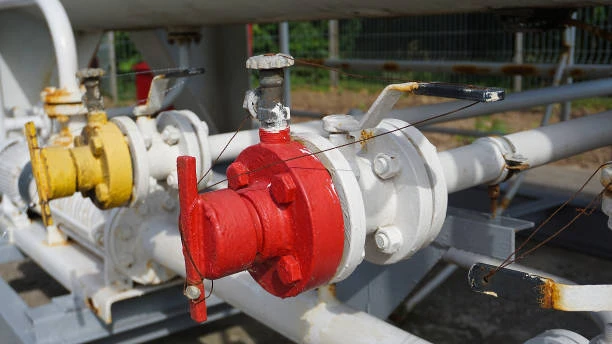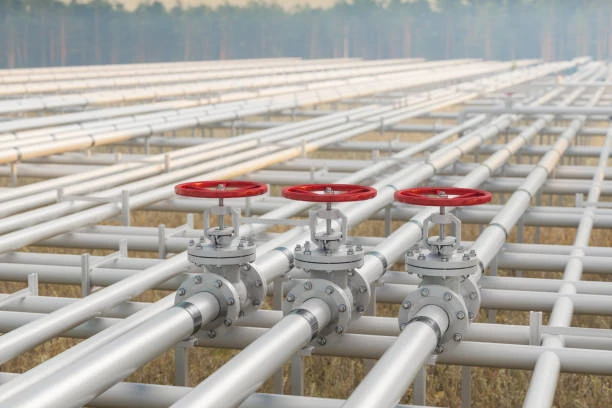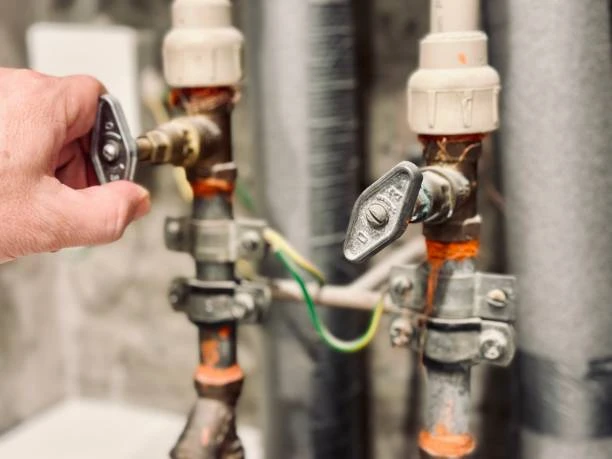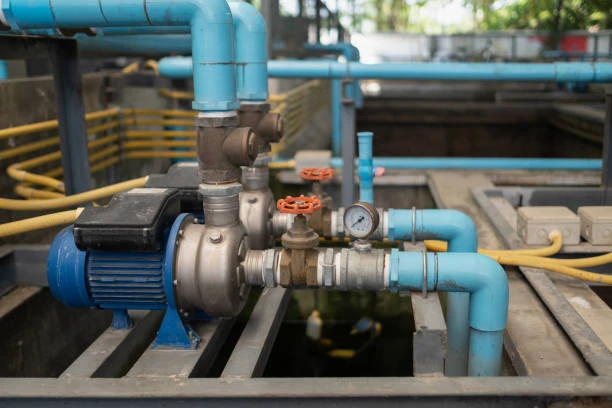The global industrial valve market is poised for significant growth over the next few years, with a projected market size of $121.67 billion by 2029. This substantial growth is driven by increasing demand across various industries such as oil and gas, chemicals, water treatment, power generation, and food processing. Industrial valves are critical components in regulating fluid flow, controlling pressure, and managing the safe operation of industrial systems.
This article provides an in-depth analysis of the industrial valve market, focusing on its growth drivers, market trends, challenges, key players, and future prospects. Let’s dive deeper into the market dynamics and explore the factors influencing the industry.
What Are Industrial Valves?
An industrial valve is a device used to control the flow of fluids (liquids, gases, or slurries) within a pipeline or system. They are designed to open, close, or regulate the flow of materials, ensuring the smooth and efficient operation of industrial processes. Industrial valves come in various forms, including ball valves, gate valves, globe valves, butterfly valves, check valves, and pressure relief valves, each serving specific purposes based on the needs of different industries.
Key Types of Industrial Valves:
- Ball Valves: Commonly used for on/off control without pressure drop.
- Gate Valves: Ideal for regulating the flow in pipelines.
- Globe Valves: Provide excellent throttling capabilities for flow control.
- Butterfly Valves: Best suited for large pipe diameters and quick shut-off applications.
- Check Valves: Prevent backflow in the system.
- Pressure Relief Valves: Used for pressure control and to avoid damage to the system.
Market Overview
The industrial valve market has witnessed remarkable growth in recent years, and the trend is expected to continue. According to an exclusive report by MarketsandMarkets™, the market is estimated to grow at a Compound Annual Growth Rate (CAGR) of approximately 5.5% during the forecast period of 2024 to 2029. This growth trajectory reflects the increasing adoption of industrial valves in various sectors and technological advancements in valve manufacturing.
The growing need for automation, the development of smart valves, and the increasing focus on energy efficiency and safety in industrial operations are contributing to the expansion of the market. Additionally, the rise of emerging economies, which are investing heavily in infrastructure, is further boosting the demand for industrial valves.
Key Drivers of the Industrial Valve Market
- Rising Demand in the Oil and Gas Sector The oil and gas industry remains one of the largest consumers of industrial valves due to the critical role these valves play in controlling and regulating the flow of liquids and gases during exploration, production, refining, and distribution. The growth of deepwater drilling, shale oil exploration, and natural gas liquefaction facilities worldwide is expected to continue driving the demand for high-quality, durable industrial valves.
- Water and Wastewater Treatment Water treatment and distribution systems require various valves to regulate flow and pressure. As the global population increases, the demand for clean water grows, leading to the expansion of water and wastewater treatment facilities. Industrial valves are essential in managing the flow and pressure of water in treatment plants, distribution systems, and other applications.
- Technological Advancements The development of smart valves with integrated sensors, actuators, and communication systems is enhancing valve performance and reliability. These valves offer remote monitoring, predictive maintenance, and energy-efficient operation, which are especially beneficial in large-scale industrial systems.
- Increasing Industrial Automation Automation is becoming increasingly common in industries like manufacturing, chemicals, and power generation. Automated valves are essential in controlling processes and systems with minimal human intervention. As industries move towards digitalization and Industry 4.0, the demand for automated industrial valves is expected to rise.
- Regulatory and Safety Standards Stringent safety and environmental regulations in various sectors are increasing the need for reliable and high-performance valves. Industrial valves play a key role in ensuring safety by controlling pressures, preventing leaks, and avoiding accidents in hazardous environments.
Market Trends
- Smart and Automated Valves
The shift towards smart valves is a key trend in the industrial valve market. Smart valves are equipped with digital controllers, sensors, and actuators, enabling real-time monitoring and enhanced control over fluid flow. This is particularly useful in industries where precise control and real-time data are crucial for maintaining operational efficiency. - Energy-Efficient Valves
With a growing focus on energy conservation and sustainability, manufacturers are developing valves that reduce energy consumption. Energy-efficient valves help industries minimize operational costs while also reducing their environmental impact. - 3D Printing in Valve Manufacturing
The use of 3D printing technology in valve manufacturing is revolutionizing the production process. This technology allows for faster prototyping, reduced lead times, and the production of complex valve designs that would be difficult or impossible to create using traditional methods. - Integration with IoT
The integration of industrial valves with the Internet of Things (IoT) is allowing for better data analytics and process optimization. IoT-enabled valves can provide insights into valve performance, wear and tear, and possible failures, enabling predictive maintenance and reducing downtime. - Customization and Specialization
As industries continue to evolve, there is an increasing demand for customized valves that cater to specific operational needs. Manufacturers are providing tailored solutions to meet the unique requirements of various sectors, from high-pressure applications in the oil and gas industry to food-grade valves for the food and beverage sector.

Regional Insights
- North America
North America is one of the leading markets for industrial valves, driven by the large-scale oil and gas industry, power generation, and water treatment sectors. The United States, in particular, is a major contributor to the growth in demand for industrial valves, with ongoing investments in shale oil and gas exploration, refinery expansion, and infrastructure development. - Asia-Pacific
The Asia-Pacific region is expect to witness the highest growth rate in the industrial valve market. Rapid industrialization, urbanization, and growing investments in manufacturing, chemical processing, and infrastructure projects in countries like China, India, and Japan are propelling the demand for industrial valves. - Europe
Europe is a significant market for industrial valves, with strong demand from the automotive, chemical, and pharmaceutical industries. The region is also focus on energy efficiency and reducing environmental impact, which is driving the adoption of innovative valve technologies. - Middle East and Africa
The Middle East is a crucial market due to the presence of large-scale oil and gas operations. Africa is also seeing increased infrastructure investments, which will positively influence the industrial valve market in the coming years. - Latin America
Latin America, with its growing industrial base and natural resources, presents significant opportunities for industrial valve manufacturers. Brazil, Mexico, and Argentina are some of the key markets in the region.
Challenges in the Industrial Valve Market
Despite its robust growth, the industrial valve market faces several challenges:
- High Initial Cost
The cost of industrial valves, especially high-end smart and automated valves, can be prohibitively high for small and medium enterprises (SMEs). This could limit market growth in certain regions and sectors. - Maintenance and Repairs
Industrial valves require regular maintenance and repairs, especially in industries with harsh operational conditions. Ensuring the durability and reliability of valves in such conditions is a critical challenge for manufacturers. - Supply Chain Issues
The global supply chain disruptions, particularly during the COVID-19 pandemic, have impacted the availability of raw materials and components for valve manufacturing. This has led to delays in production and increased costs. - Regulatory Compliance
Stringent regulations and compliance requirements in various industries necessitate continuous innovation in valve technology. Manufacturers must ensure that their products meet the latest safety, quality, and environmental standards.
Future Outlook
The future of the industrial valve market looks promising. As industries continue to prioritize automation, efficiency, and safety, the demand for advanced industrial valves will continue to rise. The development of smart valves and IoT integration will further enhance operational efficiency and reduce downtime. Additionally, increasing investments in infrastructure, especially in emerging markets, will provide new opportunities for growth in the coming years.
Conclusion
The industrial valve market is experiencing rapid growth, driven by advancements in technology, increasing demand in key sectors like oil and gas, water treatment, and automation, and the growing focus on energy efficiency and safety. With a project market size of $121.67 billion by 2029, the industry is well-position for future expansion. However, companies must navigate challenges such as high costs, maintenance demands, and supply chain disruptions to maintain a competitive edge.
As industries evolve, the integration of digital technologies, smart valves, and customized solutions will be crucial in meeting the growing demands of global markets.
FAQ about Industrial Valves
- What are industrial valves useful for?
Industrial valves control the flow of liquids, gases, and slurries in industrial systems. They are useful in a wide range of applications including oil and gas, water treatment, chemicals, power generation, and manufacturing. - What is the difference between a ball valve and a gate valve?
A ball valve is primarily useful for on/off control with minimal pressure drop. While a gate valve is useful for regulating flow and controlling pressure in pipelines. - How do smart valves work?
Smart valves are equip with sensors, actuators, and controllers that enable real-time monitoring and automated control of fluid flow. Which enhancing system efficiency and reliability. - Which industries are the largest consumers of industrial valves?
The oil and gas, water treatment, power generation, and chemical industries are some of the largest consumers of industrial valves due to their critical role in fluid control and safety. - What is the projected growth rate of the industrial valve market?
The industrial valve market is expect to grow at a CAGR of approximately 5.5% during the forecast period from 2024 to 2029, reaching a market size of $121.67 billion by 2029.


















